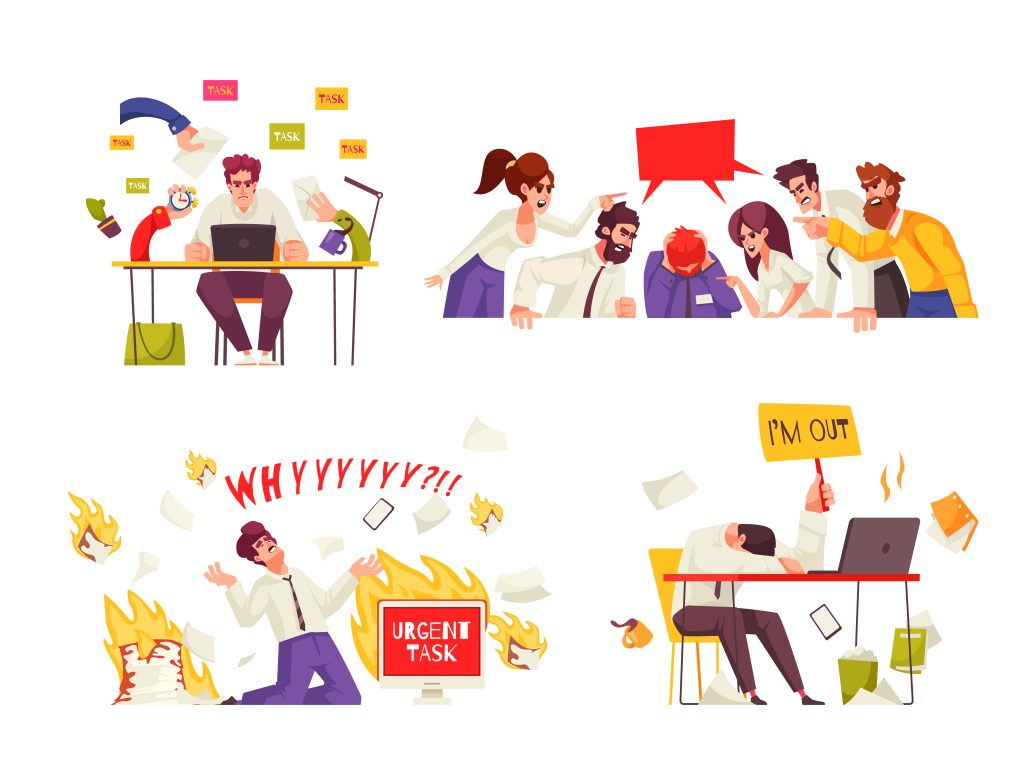Why Creative Burnout Happens to Everyone
Emma Brooks July 17, 2025
In today’s fast-paced, hyper-connected world, creative professionals—whether writers, artists, designers, or entrepreneurs—are more vulnerable than ever to burnout. While creativity is often viewed as an endless wellspring of inspiration, the reality is that it’s just as susceptible to exhaustion as any other part of our mind and body. In fact, creative burnout has become so prevalent that it’s now recognized as a significant issue in various industries, with professionals from all walks of life struggling to maintain their passion, drive, and mental health.
But why does creative burnout happen to everyone? And more importantly, how can we prevent it or overcome it once it strikes? This article will delve into the reasons behind creative burnout, its impact on individuals, and most importantly, how to manage and recover from it.

What is Creative Burnout?
Creative burnout is a state of mental, emotional, and physical exhaustion that results from the continuous demands placed on creative professionals. Unlike regular burnout, which is often associated with monotonous, high-stress work, creative burnout stems from the depletion of inspiration, motivation, and energy in fields that require constant innovation and original thinking.
This phenomenon can manifest in various ways:
- Loss of inspiration: A feeling of being stuck or unable to generate new ideas.
- Mental fatigue: Difficulty focusing or staying engaged in creative tasks.
- Decreased productivity: Reduced output or a noticeable decline in the quality of work.
- Physical exhaustion: A general sense of tiredness or lack of energy, often accompanied by stress or anxiety.
It’s important to note that creative burnout can affect anyone in a creative field, even those who initially find joy and fulfillment in their work. It’s not an issue of laziness or lack of talent—it’s a natural consequence of overexertion and mismanagement of one’s energy and resources.
Why Does Creative Burnout Happen to Everyone?
Creative burnout is an emerging issue that affects a wide range of people in creative industries. However, it’s not just limited to “artists” or “creators” in the traditional sense. In fact, in today’s gig economy, anyone who works in a profession that requires original thinking or constant innovation—whether it’s design, writing, marketing, entrepreneurship, or content creation—can fall victim to burnout.
Here are some of the key reasons why creative burnout is a common experience:
1. Constant Pressure to Innovate
In today’s world, the demand for innovation is unrelenting. Whether it’s creating the next viral social media post, designing the perfect product, or writing an eye-catching article, the expectation to constantly come up with something new can be overwhelming. Over time, the pressure to innovate without sufficient breaks or rest can deplete a creator’s mental and emotional reserves.
For example, content creators are often under the gun to produce engaging material on a consistent basis. This pressure to keep up with trends and demands—coupled with the fear of missing out (FOMO)—can lead to exhaustion, making it hard to create work that feels genuine or inspired.
2. Overwork and Lack of Downtime
Many creative professionals struggle with balancing their work and personal lives. The ability to switch off is particularly challenging when you are passionate about your work, but the constant drive to succeed often leads to overwork. This can result in a depletion of both physical and mental energy, causing burnout.
The issue is compounded by the fact that modern technology makes it hard to disconnect. With email, social media, and cloud-based tools, creatives are always “on,” often working long hours without proper rest. Research from the American Psychological Association highlights the dangers of constant connectivity, pointing out that the lack of downtime between work sessions contributes significantly to burnout.
3. Perfectionism and Self-Criticism
Creative individuals are often their own harshest critics. This tendency toward perfectionism can lead to dissatisfaction with their work, causing them to feel as though nothing they create is good enough. The pressure to meet unrealistically high standards, coupled with the fear of failure, can lead to frustration and stress.
According to Psychology Today, perfectionism in creative fields is closely linked to burnout, as it fosters an environment of constant self-doubt and anxiety. Creatives may avoid finishing projects or constantly revise their work, which results in a cycle of stagnation and exhaustion.
4. Isolation and Lack of Support
Creative work is often done in solitude, and this isolation can lead to a lack of social and emotional support. When creatives don’t have a strong support network or feel disconnected from others, they may struggle to manage the emotional toll of their work. Without proper outlets for stress or platforms for feedback and validation, burnout can set in.
In many creative fields, competition and comparison are also prevalent. Creatives may feel isolated, questioning their work in comparison to others or fearing they aren’t measuring up to industry standards. This lack of connection can make burnout worse, leading to feelings of loneliness and inadequacy.
5. The Blurring of Passion and Profit
The rise of the “passion economy” has led many individuals to monetize their hobbies, turning what was once a source of joy into a source of stress. While monetizing a passion sounds ideal, the reality is that the need to constantly produce for profit can strip away the enjoyment and creativity that initially fueled the work.
This blurring of lines between passion and work can cause individuals to lose sight of why they started in the first place, ultimately leading to burnout. A study by Harvard Business Review emphasizes that when the passion for a project is entangled with the pressures of profit, creative burnout is often the result.
How to Prevent and Recover From Creative Burnout
While creative burnout is a common challenge, it is also preventable and manageable. Here are some strategies that can help you avoid burnout or recover if it’s already set in:
1. Set Boundaries and Prioritize Rest
Setting boundaries between work and personal life is essential for preventing burnout. Taking scheduled breaks, getting enough sleep, and making time for hobbies or social activities outside of work can help you recharge. Research from the American Psychological Association suggests that adequate rest is critical for maintaining cognitive function and emotional well-being.
2. Embrace Imperfection
Recognize that perfection is not the goal. Embracing imperfection in your work allows you to release the pressure of always having to be flawless. By letting go of unrealistic expectations, you can reduce the self-criticism that often leads to burnout. A study published in Psychology Today found that embracing imperfection and focusing on progress, not perfection, helps combat burnout and fosters long-term creativity.
3. Diversify Your Creative Outlet
One way to avoid burnout is to engage in creative activities that don’t have financial or professional stakes. For example, if you’re a writer who depends on content creation for income, try exploring writing as a personal hobby, like journaling or fiction writing. This separation allows you to enjoy the process of creation without the pressure of monetization.
4. Seek Support and Community
Building a supportive network is essential for managing stress and burnout. Whether it’s through creative groups, mentorships, or therapy, seeking support from others can provide emotional validation, constructive feedback, and help alleviate feelings of isolation. Research suggests that strong social networks are protective against burnout and help individuals recover faster.
5. Practice Mindfulness and Self-Care
Mindfulness techniques, such as meditation, yoga, or deep breathing, can help reduce stress and increase focus. Taking time for self-care is essential to recharge your body and mind. Mindfulness-based stress reduction (MBSR) programs have been shown to help reduce symptoms of burnout and improve overall mental health (Kabat-Zinn, 1990).
Conclusion
Creative burnout is a universal experience, but it’s not an insurmountable obstacle. By understanding the causes, recognizing the signs early, and taking proactive steps to manage your energy and mental health, you can maintain a healthy relationship with your creativity. Remember, creativity thrives when you nurture it and protect it from burnout. Finding the balance between work, passion, and self-care is key to fostering long-term creative success and well-being.
Reference
- “Creative Burnout: When the Creativity Tap Runs Dry” – Ness Labs – https://nesslabs.com/creative-burnout
- “The Art of Overcoming Creative Burnout” – Christina Greve – https://christinagreve.com
- “Creative Burnout & Improving Artist Mental Health” – Sketch Design Repeat – https://sketchdesignrepeat.com





